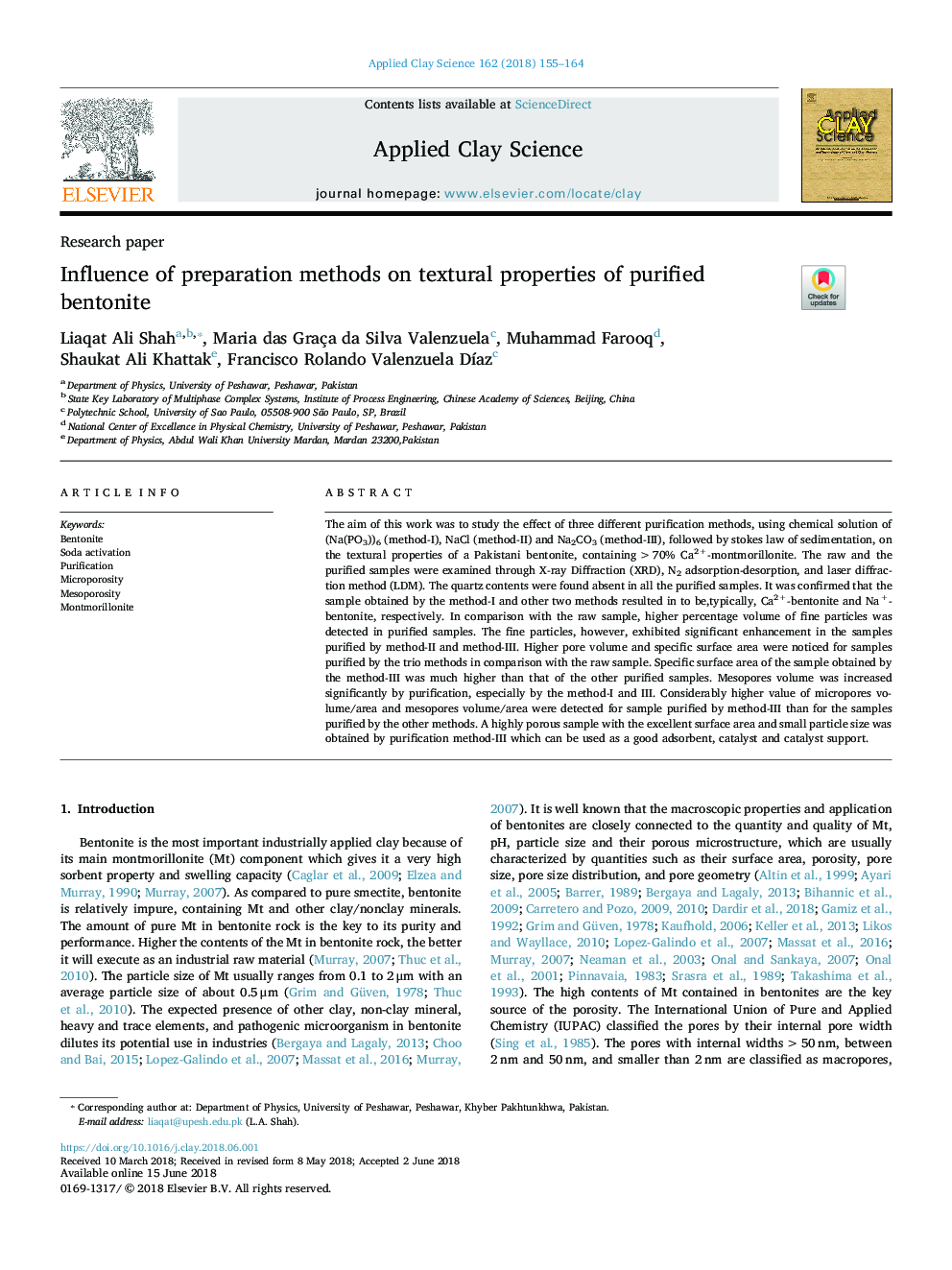| Article ID | Journal | Published Year | Pages | File Type |
|---|---|---|---|---|
| 8045665 | Applied Clay Science | 2018 | 10 Pages |
Abstract
The aim of this work was to study the effect of three different purification methods, using chemical solution of (Na(PO3))6 (method-I), NaCl (method-II) and Na2CO3 (method-III), followed by stokes law of sedimentation, on the textural properties of a Pakistani bentonite, containing >70% Ca2+-montmorillonite. The raw and the purified samples were examined through X-ray Diffraction (XRD), N2 adsorption-desorption, and laser diffraction method (LDM). The quartz contents were found absent in all the purified samples. It was confirmed that the sample obtained by the method-I and other two methods resulted in to be,typically, Ca2+-bentonite and Na+-bentonite, respectively. In comparison with the raw sample, higher percentage volume of fine particles was detected in purified samples. The fine particles, however, exhibited significant enhancement in the samples purified by method-II and method-III. Higher pore volume and specific surface area were noticed for samples purified by the trio methods in comparison with the raw sample. Specific surface area of the sample obtained by the method-III was much higher than that of the other purified samples. Mesopores volume was increased significantly by purification, especially by the method-I and III. Considerably higher value of micropores volume/area and mesopores volume/area were detected for sample purified by method-III than for the samples purified by the other methods. A highly porous sample with the excellent surface area and small particle size was obtained by purification method-III which can be used as a good adsorbent, catalyst and catalyst support.
Related Topics
Physical Sciences and Engineering
Earth and Planetary Sciences
Geochemistry and Petrology
Authors
Liaqat Ali Shah, Maria das Graça da Silva Valenzuela, Muhammad Farooq, Shaukat Ali Khattak, Francisco Rolando Valenzuela DÃaz,
